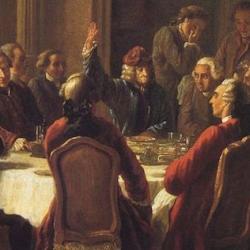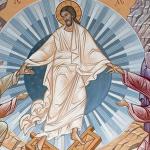In a 1987 review of Peter Sloterdijk’s Critique of Cynical Reason, Neil Wilson observes that for Sloterdijk “cynicism is enlightenment turned sour: a sourness which results from the self-denial that self-survival in a society dominated by instrumental rationality requires” (55).
It is not a new attitude, but an ancient one, but Sloterdijk distinguishes between the original kynical protest against mainstream culture and philosophy and the cynical accommodation to the dominant culture: “Already during the classical period of Greek civilization a tension was present in the urge of individuals to remain themselves as living beings in the face of the contortions and half-truths of their society. Being was maintained through opposition, laughter, refusal, and the call to aright to one’s complete nature and a full life. Enlightenment began as ‘kynicism,’ low culture, inarticulate, spastic and ready to fight; the idea found its way into the philosophical stoas and from there into Christianity where Christian theology tried to bury it along with the rest of our pagan inheritance. The concept “cynicism” is reserved for the reply of the dominant culture to the ever-present kynical provocations. Kynicism and cynicism correspond to opposition and repression: more exactly, the embodiment of the self in opposition and the division of the self in re- pression. In crisis situations they come to blows. They are constants in Western history: typical forms of apolemical consciousness. From a relatively scholarly analysis of the souring of the Enlightenment, we are treated in part two to a discussion in which ‘brother pig’ is the main topic. Kynicism and cynicism are concepts that are communi- cated through body language as well as through verbal and written forms. The Enlightenment may have silenced the physical, but it couldn’t kill it. Breasts, behinds, feces and genitals are all fields for the ex- pression of the kynical-cynical inspiration, and all fleshy objects for Sloterdijk’s mill” (56-7).
The shift is evident in the change from Diogenes to Lucian: “Diogenes, who was the embodiment of low theory. He led the opposi- tion against Socratic discussion. Kynicism according to Sloterdijk was rooted in man’s animalness and used the bodies’ gestures as arguments: farting, shitting, and masturbating in public places – pissing against an idealistic wind. Diogenes did not talk against idealism; he lived in op- position to it. Diogenes, ‘the dog,’ made fun of his serious colleagues. He was antitheoretical, antidogmatic, antischolastic. With Lucian of Sarnosata the critique changes places. Lucian becomes respected and is co-opted. Criticism becomes opportunism and is directed toward intellectual simpletons” (57).
What Sloterdijk sees in contemporary culture is not truly subversive kynicism but coopted cynicism: “As a realist he has left the dualism of good and evil behind and replaced it with knowledge and power. As autopian he holds them tightly to his breast. He is cynic and dreamer; one who knows that if he wants to rule over a better world, he needs the truth in order to lie. He is not interested in men as ends, but as means to find his own place in the sun. The last character in the cabinet of cynics is Heidegger’s ‘Man.’ Man exists but there is nothing of substance to him. Man is a construct, decentered and dissipated (zerstreut).The 18th century’s will to individuality has become the death of the self. Man arms, dissipates, and dies” (58).
(Wilson, “Punching out the Enlightenment: A Discussion of Peter Sloterdijk’s Kritik der zynischen Vernunft,” New German Critique, 41 [1987] 53-70.)















